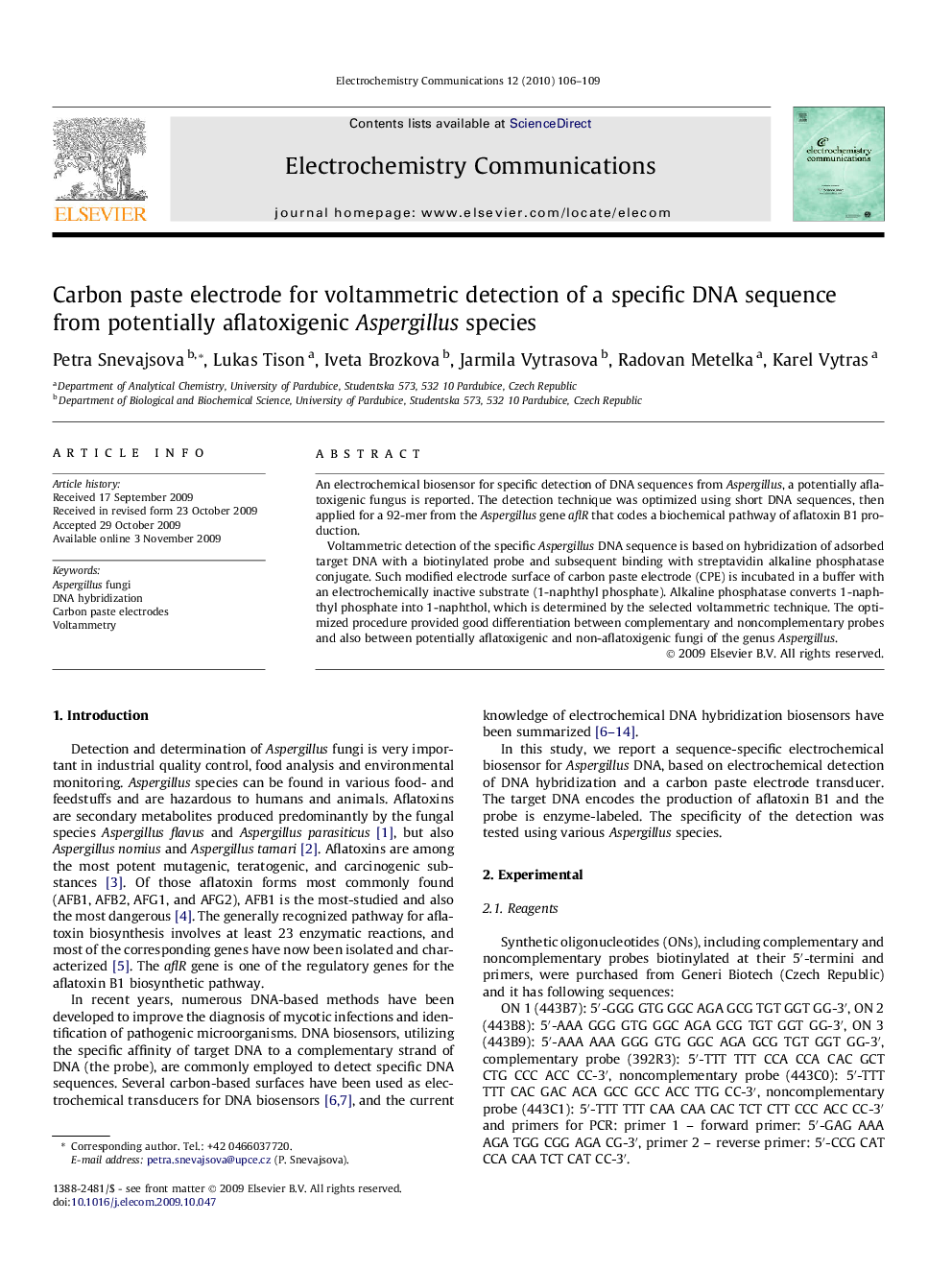| Article ID | Journal | Published Year | Pages | File Type |
|---|---|---|---|---|
| 180939 | Electrochemistry Communications | 2010 | 4 Pages |
An electrochemical biosensor for specific detection of DNA sequences from Aspergillus, a potentially aflatoxigenic fungus is reported. The detection technique was optimized using short DNA sequences, then applied for a 92-mer from the Aspergillus gene aflR that codes a biochemical pathway of aflatoxin B1 production.Voltammetric detection of the specific Aspergillus DNA sequence is based on hybridization of adsorbed target DNA with a biotinylated probe and subsequent binding with streptavidin alkaline phosphatase conjugate. Such modified electrode surface of carbon paste electrode (CPE) is incubated in a buffer with an electrochemically inactive substrate (1-naphthyl phosphate). Alkaline phosphatase converts 1-naphthyl phosphate into 1-naphthol, which is determined by the selected voltammetric technique. The optimized procedure provided good differentiation between complementary and noncomplementary probes and also between potentially aflatoxigenic and non-aflatoxigenic fungi of the genus Aspergillus.
